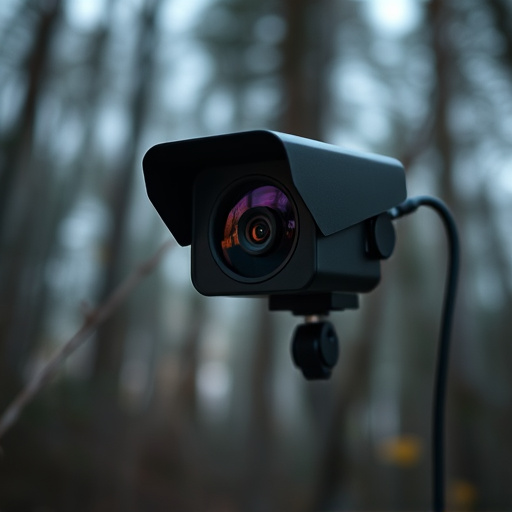Optical sensor technology powers modern "nanny cams," allowing them to capture movement or illumination changes discreetly. To maximize effectiveness, hide these cameras in strategic locations with clear sightlines but minimal visibility—like corners, behind furniture, or above doors. Advanced techniques include motion-activated sensors, infrared tech, and creative placements like behind pictures, clocks, mirrors, bookshelves, appliances, or disguised as everyday items like pens, plants, or toys, ensuring comprehensive coverage without compromising aesthetics or evading detection.
In the realm of home security, optical sensor detection using nanny cams is a game-changer. Understanding the basics of this technology and mastering professional methods for optimizing sensor sweep coverage can significantly enhance surveillance effectiveness. This comprehensive guide delves into the art of locating and concealing nanny cams, offering practical tips to avoid detection. Learn where to hide nanny cams discreetly and ensure optimal performance in today’s digital era.
- Understanding Optical Sensor Detection: The Basics of Nanny Cam Technology
- Professional Methods for Optimizing Sensor Sweep Coverage
- Locating and Concealing Nanny Cams: A Comprehensive Guide to Avoid Detection
Understanding Optical Sensor Detection: The Basics of Nanny Cam Technology
Optical sensor detection forms the backbone of modern “nanny cam” technology, allowing for discreet and effective surveillance. These tiny cameras, often disguised as everyday objects like smoke detectors or power outlets, rely on sophisticated optical sensors to capture footage. Understanding how these sensors work is key to implementing such systems effectively. The basic principle involves using light-sensitive components to detect movement or changes in illumination, triggering the camera to record video or take snapshots.
When considering where to hide nanny cams, the goal is to find spots that offer clear lines of sight while remaining hidden from view. Common locations include above doors, in corners, or behind furniture. Opting for cameras with wide-angle lenses can help maximize coverage area without requiring multiple placements. Additionally, ensuring proper lighting in the monitored space aids sensor performance by providing ample visual data for analysis.
Professional Methods for Optimizing Sensor Sweep Coverage
To optimize sensor sweep coverage, professionals employ advanced methods that ensure comprehensive and accurate data collection. One key technique involves strategic placement of sensors in hard-to-reach areas, often referred to as ‘nanny cam’ locations. By hiding cameras in discreet places like behind pictures, inside clocks, or beneath furniture, experts capture uninhibited views while maintaining an aesthetically pleasing environment. This method is particularly effective for large spaces where traditional surveillance might be less conspicuous.
Additionally, using motion-activated sensors and infrared technology allows for a dynamic sweep. These tools activate cameras only when movement is detected, maximizing battery life and storage capacity. Such professional methods not only enhance security but also ensure that every angle and corner is covered, providing a detailed and comprehensive view of the monitored area—ideal for where to hide nanny cams or any other surveillance equipment.
Locating and Concealing Nanny Cams: A Comprehensive Guide to Avoid Detection
Nanny cams, or hidden cameras, are often placed in strategic locations to monitor and record activities within a home or care environment. However, with increased awareness and technological advancements, locating and concealing these devices has become an art. This comprehensive guide aims to provide insights into where—and how—to hide nanny cams effectively, ensuring maximum discretion while maintaining surveillance.
To avoid detection, consider incorporating creative hiding spots that align with the environment’s natural elements or everyday objects. For instance, installing cameras behind mirrors, within bookshelves, or inside everyday appliances like clocks and smoke detectors can be effective. Additionally, using miniature cameras designed to resemble common items like pens, potted plants, or even children’s toys can help blend them into the surroundings, making it harder for individuals to suspect their presence.
In conclusion, mastering optical sensor detection involves a combination of understanding nanny cam technology, optimizing sensor sweep coverage, and strategically locating these devices to avoid detection. By implementing professional methods discussed in this article, including careful consideration of where to hide nanny cams, you can ensure comprehensive monitoring while maintaining privacy and security.
